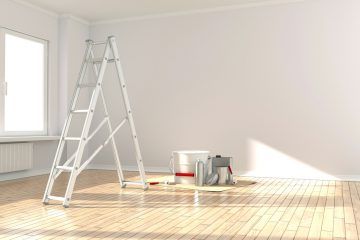Redecoration a Growing Problem in Tenancy Deposit Disputes
Redecoration is a growing problem in tenancy deposit disputes, according to the latest annual study from the Tenancy Deposit Scheme (TDS).
Redecoration issues now account for 32% of all disputes, ahead of rent arrears at 19%, but behind cleaning at 57%, and damage to fixtures and fittings at 51%.
Imfuna, the developer and provider of digital inventory app Imfuna Let, claims that interior décor is a growing concern for those in the lettings sector, as it causes the most confusion amongst landlords, letting agents and tenants.
The firm believes that the fundamental issue driving redecoration issues is a difference in opinion between landlords/letting agents and tenants. Landlords and agents frequently assume that tenants will

Redecoration a Growing Problem in Tenancy Deposit Disputes
repaint a property at their own cost following a three or four-year tenancy, although they are not obliged to do so.
And while a few light scuffs after a six-month tenancy can definitely be classed as fair wear and tear, heavy markings, scrapes and several screw holes during the same length of time are certainly tenant damage.
The firm states that the longer the tenancy, the more allowance must be made for fair wear and tear.
The Founder and CEO of Imfuna, Jax Kneppers, explains: “Landlords and agents should recognise that there will be inevitable wear and tear to a property’s décor during a tenancy. However, clearly if there is damage to anything within the property, including damage to walls and ceilings, this is chargeable to the tenant.
“A thorough and professional inventory will capture the condition and décor at the start and end of the tenancy, and this should be used as evidence in the event of a dispute. Clear photographs and commentary detailing damage to anything within the property are vital if a dispute is to be resolved.”
He continues: “When looking specifically at walls and ceilings, the quality of emulsion paint will have an impact on how well walls will wear. For example, a new build will generally only be painted with a thin coat, which will wear much faster. A landlord may choose to cut corners and water down emulsion to make it go further; a landlord may also choose to use a good quality paint for the rented property, in the knowledge that the interior décor will be slower to show wear and tear.
“If a tenant has redecorated without prior consent of the landlord or letting agent in a non-neutral colour, then the cost of repainting can be charged to the tenant, as long as this is stipulated within the terms of the lease. The same is applicable if a tenant has allowed a sofa or other piece of furniture to continually rub against the wall, causing chipping and heavy rub lines.
“Other items not classed as wear and tear are nail holes, screw holes, blue tack marks, Sellotape, and additional cabling fitted either with cable clips or from a drilled hole through the wall. Grease marks and excessively grubby areas are not wear and tear.”
Kneppers adds: “When it comes to wallpaper, some discolouration will happen over time, and glued seams will slowly become loose and need re-fixing occasionally. Cheap wallpaper will tear and rub more easily than expensive wallpaper. With daily use, a few minor nicks to the surface of the paper are inevitable, as are a few light scuffs, especially in a heavy-use area such as halls and stairways. Tears to seams or any other part of the wallpaper are classed as damage, as are heavy rubs, which remove areas of paper.
“To clear up any confusion between landlords, agents and tenants, the property’s condition should be fully recorded through a comprehensive inventory at the start of any new tenancy, supported by a thorough check-in and check-out report.”
Landlords, have you ever had redecoration issues with your tenants? Read this advice to ensure that both parties understand their responsibilities.




